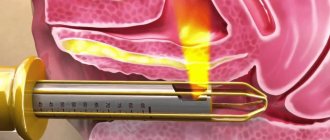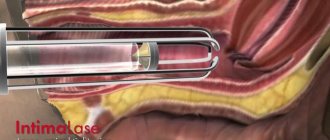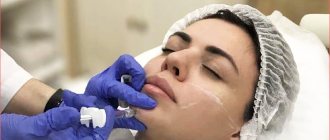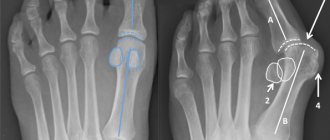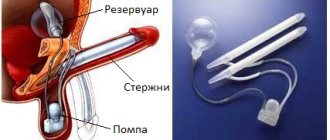Modern labiaplasty. How to make it beautiful?
Excessively elongated and thickened labia minora can be a source of physical discomfort and psychological trauma for many women.
At the same time, given the intimacy of this topic, it is not always clear who to turn to for help. There is a rather complex but effective method for eliminating this deficiency, labiaplasty. This is a surgical procedure that removes excess tissue from the labia.
Choosing a clinic and a doctor is one of the main steps that primarily determines whether you will feel better or worse after labiaplasty.
This is an operation, not some kind of correction, but a surgical intervention and, moreover, quite complex. In the sense that simply cutting off part of the labia and suturing it will not be difficult for any surgeon. But to make sure that the result is truly beautiful and natural for you, this is already difficult.
Modern labiaplasty today is a high-tech intervention that uses all the latest surgical technologies.
The main problem is the need to do it beautifully. A huge number of vessels penetrate these seemingly small folds and this is what makes it difficult to achieve a good result.
All doctors who have performed this operation have at least once encountered the fact that when you cut off excess lip tissue, severe bleeding immediately begins. An absolutely normal reaction occurs when, in an attempt to pierce or cauterize these vessels with a laser, aesthetic defects, constrictions from threads, and deep burns from the laser beam occur. It is from these signs that you can immediately see how familiar the doctor is with the features of this operation.
Moreover, it does not matter at all what surgical experience the doctor has in plastic surgery or gynecology. Even a very good doctor who has no skills in this area will most likely perform this operation poorly.
Another important and necessary characteristic that distinguishes labiaplasty when it was simply cut off from a truly excellent result. The doctor must have a certain artistic perception and a sense of beauty.
Naturalness and aesthetics are not always the same thing. This fact also influences the result. Excessive excision of even not very neat-looking tissue can lead to serious physiological and aesthetic consequences.
In my opinion, it is better to have the labia remain, well, not quite the ideal shape or size, often due to the structural features of this it is not always possible to achieve this, rather than have the naked clitoris stick out or have no lips left at all.
And then problems begin: the entrance to the vagina becomes open, the mucous membrane dries out, atrophic colpitis and vulvar leukoplakia develop. Yes, and outwardly everything seems to be smooth, but not like other people. All the negativity on the part of the medical community in relation to intimate plastic surgery is associated with this feature.
A doctor operating on the labia minora must be an artist, even if only a little, and an excellent craftsman at the same time, well aware of the anatomy and physiology of this area, and possessing good manual skills. And then the result will delight, and not bring suffering.
Contraindications
Contraindications for surgery:
- malignant neoplasms,
- bleeding disorder,
- cardiovascular diseases,
- tendency to form keloid scars,
- autoimmune diseases,
- venereal diseases,
- infectious and inflammatory diseases of the pelvic organs,
- acute diseases,
- exacerbation of chronic diseases.
Often this operation is performed with other intimate operations - hymenoplasty, labiaplasty, vaginoplasty.
Labiaplasty and clitoral hood correction
Often, in combination with plastic surgery of the labia minora, it is proposed to perform the so-called resection of the “pocket” of the clitoris. In some cases, it is important to stop in time and understand that when excision of the folds around the clitoris, it can be “exposed” and if friction occurs on clothing, a decrease in sensitivity will quickly occur, and problems of a sexological nature will begin, which will be irreversible. Normally, the “exposure” of the clitoris happens by itself, and it goes beyond these folds during sexual arousal, that is, it is, as it were, protected by nature from external influences.
So, the clitoris and the area around it can be the object of plastic surgery. The operation of excision of the clitoral hood is performed for a number of reasons.
Aesthetic indications when, due to the presence of excess tissue in this area, the area appears excessively enlarged. If the clitoris is completely closed, this condition can occur during puberty. In this situation, he does not take part in sexual activity, that is, he is completely closed.
Quite often, such interventions are part of labiaplasty, its logical continuation.
What do women desire?
• Symmetrical, not too large labia • Elimination of discomfort and improvement of the quality of sexual life • Confidence in the functional viability and sexual attractiveness of the external genitalia
Clitoral plastic surgery is a minor surgical correction (excision of excess folds of skin around the clitoris or the so-called “hood”), which is often done “at the same time” as labiaplasty. The purpose of this correction is to increase the “accessibility” of the clitoris to achieve orgasm and enhance the brightness of sexual sensations
Types of labiaplasty
Globally today there are two main types of labiaplasty:
Resection
Linear resection
Resection involves excision of the marginal part of the labia as shown in the diagram; linear or wedge-shaped resection can be used.
Deepithelialization
Wedge-shaped resection Wedge-shaped labiaplasty (modification)
Deepithelialization consists in the formation of flaps of the mucous membrane of the MPG and their excision from sections remote from the edge. The choice of technique should always be determined purely individually; the doctor must explain all the features of each operation, the expected results and consequences. The extent of resection is determined in consultation individually with each woman, since everyone’s aesthetic standards are different; the main thing is not to remove too much, even if the patient asks for it. The doctor must explain that this can lead to serious consequences for health.
There are no universal methods, since no situations are the same, each woman is unique in her own way. Three main methods can be distinguished: linear, wedge-shaped, marginal wedge-shaped, the latter option is preferable, since it preserves the natural appearance of the labia. After removing excess tissue, the incision line is closed with very thin absorbable sutures.
How is the operation performed?
The surgery takes only a few minutes. The surgeon uses a scalpel or laser knife to excise tissue. We recommend performing plastic surgery using a laser; it ensures 100% sterility, eliminates the risk of bleeding and significantly speeds up the recovery process.
There are two options for clitoridectomy:
- partial excision of folded skin;
- complete removal of the fold (very rarely performed).
Preputial plastic surgery is considered the safest method to improve stimulation during sexual intercourse. In addition to functional improvement, surgical exposure also solves aesthetic problems, making the appearance of the genital organs more aesthetic and harmonious.
How much will the surgery cost?
The price of a clitoridectomy in our clinic ranges from 15 to 25 thousand rubles. The indicated cost includes the initial examination, correction, and postoperative observation of the patient. These are affordable prices considering the impressive results. The use of a laser makes the intervention more expensive, so the patient always has the final say in choosing a tool for tissue excision.
Features of the operating technique
Due to the structural features of the labia after surgery, regardless of the resection technique, scars are never formed when using a scalpel, so no traces of the intervention remain after 3 weeks.
The surgeon must perform an excision of the labia minora evenly, symmetrically, and the sutures must be applied with ultra-thin self-absorbable suture material. The needle should be inserted as close as possible to the edge of the incision; this is the only way to avoid “constrictions” that form when tying the thread. The formation of “constrictions” is the result of a poorly performed operation; they remain for life.
Anesthesia or anesthesia?
It can be local or general depending on the equipment of the clinic and the scope of the operation. The main disadvantages of the first type are the inability to perform a complex operation with a good aesthetic effect, the need for injection into a highly sensitive area, which is quite painful, and after the injection of the substance, the labia takes on the appearance of an “inflated ball”, and it is difficult to achieve symmetry.
More preferable is general, intravenous anesthesia, when the patient sleeps without feeling pain. Modern means are quite harmless and, due to rapid elimination from the body, allow you to leave the clinic within 3 hours after the intervention.
Laser or scalpel?
To solve complex cases, a surgical scalpel is traditionally used. Laser and radio wave surgery in isolation allows the intervention to be performed only using the method of linear resection, which does not allow achieving high aesthetic results.
It is also important that laser and radio wave energy involves damage to underlying tissues at a significant depth, which can contribute to a pronounced decrease in sensitivity. However, this equipment helps the surgeon as an auxiliary tool, for example, for coagulation of blood vessels.
Contour plastic surgery of the labia majora Reduction of the clitoral hood Plastic surgery of the vaginal walls Non-surgical methods of vaginal plastic surgery • Deepithelialization technique The volume of the labia majora is lost with age, and loss of volume can also be caused by sudden weight loss. In such cases, contouring using fillers will help restore the volume of the labia. These preparations based on hyaluronic acid help restore the former beauty of the intimate area, as well as restore self-confidence. The effect of fillers does not last forever. The fact is that the intimate zone is not static, but during sexual intercourse it is completely exposed to strong influence. This leads to the destruction of hyaluronic acid and a decrease in the life of the filler. The average duration of effect of contour plastic surgery is 12 months. Clitoroplasty is a procedure aimed at correcting the shape and size of the clitoris. It is performed in cases where a woman does not like the aesthetic appearance of the organ, experiences discomfort when moving, or does not enjoy sexual intercourse. Clitoral hood plastic surgery is often performed during labiaplasty to achieve maximum aesthetic effect. When planning labiaplasty, it is very important to model the correction technique and discuss the expected result. Otherwise, with a well-performed labiaplasty without reduction of the clitoral hood, in the standing position it may look like a penis, and the patient will be unhappy. The most common indications for clitoroplasty: The most common indications for intimate vaginal plastic surgery: • prolapse of the uterine walls after injury or childbirth; • urinary incontinence; • dissatisfaction with sexual intercourse, loss of sensitivity. There are two types of vaginal plastic surgery techniques: surgical and non-surgical. The surgical method of vaginal plastic surgery is colporrhaphy (See Genital prolapse). There is a non-surgical method of clitoral enlargement, which is based on the introduction of hyaluronic acid fillers. The method is low-traumatic, does not require general anesthesia and long rehabilitation - within a couple of hours the patient can return to normal life. Reduction of the clitoral hood is most often performed using the following methods: • classical technique; • double “O” technique. • large size of the clitoris, which interferes with sexual intercourse; • scars or adhesions on the clitoris; • too small and insensitive clitoris; • abnormal location of the clitoris; • clitoral injuries. Correction of the labia majora is most often carried out in cases of age-related changes in the labia majora, such as the appearance of sagging, decreased turgor, and sagging skin. If the labia majora need to be enlarged, the gynecologist-surgeon will resort to one of two low-traumatic operations: The procedures do not require anesthesia and are carried out under anesthetic cream or spray. The doctor uses a special cannula to insert plastic materials to minimize punctures. The entire procedure takes from 45 to 60 minutes. After contouring intimate plastic surgery, the patient rests for no more than two hours and returns to her normal life. The only drawback of hyaluronic acid fillers is the good, but short-lived effect. • Lipofilling The procedure involves filling the labia majora with adipose tissue, which is taken from the patient’s own areas of excess fat. • Filler injection Filler is a biological gel based on hyaluronic acid. Injections of this material allow you to quickly and efficiently achieve the desired cosmetic effect and consolidate it for a long time. The surgeon uses a special marker to mark the areas that need to be removed. After the anesthesia begins to take effect, the doctor treats the surgical field, makes incisions and removes excess tissue. Depending on the characteristics of the patient and her wishes, the doctor can use various labiaplasty techniques: linear or marginal, Z-shaped, V-shaped, W-shaped or wedge-shaped resection. • Linear or marginal resection At first glance, a simple technique that is most often used by novice surgeons. However, when resection of an excessive part of the labia minora, it is very important to form the required size, the natural oval shape of the labia and the edges of the resection. Excessive excision of the labia minora (which is the most common mistake of novice surgeons) 2-3 months after surgery can lead to gaping of the vagina and disruption of its microflora. • Wedge-shaped incision method The method consists of a V-shaped excision of a fragment of the skin of the labia. Depending on the anatomical features, the incision is made in the central fragment, at the top or bottom of the labia. The shape of the incision resembles a triangle, with the base directed towards the outer edge of the labia. The gynecologist-surgeon removes a flap of tissue, preserving as much as possible the nerve endings and blood vessels in the tissue. Then, the doctor sews the tissues together, matching the fragments and reducing the overall size of the labia. This method preserves the natural appearance of the labia and minimizes the likelihood of scarring or scarring. Deepithalization is the destruction of the upper layer of the epithelium of the central fragments of the labia with the help of a carbon dioxide or erbium laser, while preserving the edges. This method completely preserves the nerve endings and blood vessels, providing a natural appearance to the labia. With the deepithelialization method, blood loss and the likelihood of complications are minimized. After the operation, the patient must remain in the clinic for at least 2 hours under the supervision of the attending physician in a comfortable room. During this time, the doctor must make sure that there is no threat to the health condition, and the patient can leave the clinic on her own. Upon discharge, a surgical protocol and detailed recommendations for further rehabilitation are issued. At any time, the doctor remains in touch and makes recommendations if necessary • Z-plasty A modernized wedge-shaped incision method, which consists of changing the shape of the incision from a V-shaped to a Z-shaped Rehabilitation period To get the best result of labiaplasty, it is extremely important to follow the recommendations of the attending physician, received on the day of labiaplasty. It is necessary to abstain from sexual activity, physical activity and visits to the pool for 3-4 weeks. In addition, the seams need to be treated with antiseptic agents prescribed by a doctor. The first day after the operation is best spent at home, and after a day or two you can safely go to work or study. Already a month after labiaplasty, you can completely restore your usual lifestyle and evaluate the result - symmetrical, beautiful, harmoniously sized labia. The final results of labiaplasty are best assessed after two to three months. This is necessary in order to exclude possible hidden swelling, and during this time the lips will already take on their final appearance.
With age, the vivid sensations during sexual intercourse may fade. This can happen due to previous childbirth, surgeries, and injuries. Every adult woman can return her former sensations by such methods as changing the clitoris, reducing the volume of the vagina and narrowing its vestibule, increasing the G-spot by introducing hyaluronic acid or the patient’s fat cells, eliminating age-related vaginal dryness and sagging skin of the labia.
Surgical defloration Combined plastic surgery Today, medicine is able to perform plastic surgery of the vaginal walls without surgical intervention. There are the following non-surgical methods: Thread lifting - an intimate plastic surgery technique is quite new, but has already won the trust of many women. For the first time, the techniques were used in cosmetology for face and body lifting and later began to be successfully used in gynecology. If the volume of the vagina increases after childbirth, a gaping genital slit, or slight prolapse of the vaginal walls can be corrected using thread lifting. It consists of introducing special absorbable threads with notches into the walls of the vagina, which, when tied, allow the tissue of the perineum to be tightened. After a few months, the threads will dissolve and completely disappear from the body. They are replaced by fibrous tissue, which will become a kind of “corset”, narrowing the volume of the vagina. Thread lifting of the vagina is carried out on an outpatient basis, hospitalization is not required at all, a similar procedure is performed in just 20-30 minutes, the effect after thread lifting of the vagina, as a rule, lasts from 5 to 10 years. The combination of both methods improves the result and increases the duration of the effect. In addition, if the patient wishes, during these procedures it is also possible to enlarge the G-spot using injections, and correct the labia and clitoris. The procedures are absolutely painless, as they are performed under anesthetic. The duration of the procedures reaches a maximum of an hour; an hour after resting from the operation, the patient can go home. It is recommended to abstain from sexual intercourse, physical activity, swimming pools, saunas and baths for two weeks. Contraindications to the operation are few: pregnancy and the period after childbirth (1.5 months), • contour plastic surgery of the vaginal walls; Possible with slight prolapse of the walls, most often used for women after childbirth. Thanks to injections with hyaluronic acid fillers, the vaginal walls that have lost their elasticity become elastic again, maintaining the effect for a long time. • thread lifting of the vagina;
Defloration is a violation of the integrity of the hymen. Normally, the hymen easily tears during the first sexual intercourse, since it is not initially integral - several holes in the hymen are needed to easily remove menstrual fluid from the body.
Hymenoplasty However, in some cases, the first sexual intercourse is marred by acute pain and the inability to break the hymen due to its atypical density or increased sensitivity. In addition, if the hymen is closed, defloration must be carried out almost immediately after the start of the first menstruation. The main indications for surgical defloration include: Restoration of the hymen is a low-traumatic operation for reconstruction of the hymen, which has no medical indications and is performed solely at the request of the patient. Hymenoplasty can be performed at any age and regardless of the number of births. The operation is performed under local anesthesia or (if desired) under general anesthesia. It lasts only a few minutes: a gynecologist-surgeon uses a radio wave scalpel or laser to bloodlessly and painlessly dissect the hymen, after which he disinfects the incision. After defloration, there may be discomfort for some time, which is easily relieved by analgesic drugs. • anatomical defects and structural pathologies; • acute pain when trying to naturally lose virginity; • panic fear of natural loss of virginity.
The hymen can be broken not only during a woman's first sexual intercourse, but also during exercise, careless active masturbation, improper use of tampons, medical procedures, as a result of injury in a collision or fall in women who have never had sex. Various reasons are prompting an increasing number of young women to undergo hymen repair surgery. Modern medicine today is able to offer women an almost perfect surgical simulation of their lost innocence. This surgery can be performed months or years after women have lost their virginity.
Rehabilitation after surgery
Only on the day of the operation you need to behave very calmly, avoid sudden movements, lifting heavy objects, and lie down more. You need to be prepared that it will hurt in the first three days, but taking regular analgesic tablets like ketonal always helps.
A solution of chlorgrexidine or furatsilin is used to irrigate the operated area; this should be done as often as possible. The threads and swelling go away on their own within three weeks. Full recovery can be guaranteed within a month.
Pain?
Usually, quite intense pain in the genital area continues for a day after labiaplasty. There is no need to panic, just be prepared for it; regular standard painkillers in tablets are quite effective. Then the pain decreases in intensity and after three days everything will pass. Some discomfort will remain for up to two to three weeks, simply because when walking or other movements the genital area is always touched.
Bleeding?
There should be no bleeding, but scanty discharge is possible for up to two weeks. Considering that the area is very heavily supplied with blood and there are many vessels, any stress should be avoided on the first day after surgery. Lying down more, walking short distances, in principle, it’s better to stay at home. Otherwise, bleeding may develop, not so severe as to lead to any consequences, but quite sufficient to require hospitalization.
Edema?
Swelling in varying degrees of severity can persist for up to one month. In the first days, swelling is extremely pronounced, and hematomas can form. The size of the edema is especially large when correction of the clitoral hood is performed along with labiaplasty.
Stitches and scars?
There are no scars after labiaplasty, this is due to the characteristics of the tissue that makes up the labia minora. The exception is when a surgical laser is used, then the edge of the incision can be quite rough and dense. These are also not exactly scars, but simply specific burn changes. Self-respecting surgeons use only self-absorbable threads, which go away on their own within a month, meaning they don’t have to be removed.
What else needs to be done?
Treatment of the surgical wound is required within a week. As a rule, drugs with a mild antiseptic effect are recommended, these are furatsilin, chlorhexidine, etc. You just need to water the wound as often as possible, preferably after each urination, but at least twice a day.
Sports, bath, sex life?
Purely theoretically, all this is permissible already two weeks after labiaplasty, that is, when the surgical wound has healed. But pain and swelling most likely will not allow you to exercise at full capacity, so most likely it would be better to take a break for three weeks. As for sexual life, here, too, the limitation is more aesthetic than physiological. Probably, a man should not show this area with traces of surgery, swelling, threads. Therefore, it is better to wait until complete rehabilitation is completed. As for the bath, for the first two weeks you will have to wash only in the shower, but then at the discretion of the patient.
Who needs labia reduction surgery?
The operation in Moscow at affordable prices is most often performed on women who have given birth to children naturally one or more times. Childbirth is a rather difficult process, often leading to injuries to the genitals and perineal area to varying degrees.
Therefore, patients may not be satisfied with:
- different length and volume of lips;
- loss of skin elasticity in the labia majora area.
However, not in all cases, aesthetic defects can be associated with childbirth. It happens that asymmetry is a congenital feature of a girl. It can be:
- underdevelopment of organs, which manifests itself on one or both sides at once;
- excessive development, leading to an increase in the size of the external intimate organs.
Intimate plastic surgery: to do or not?
To answer this question, a woman needs to consider the following important points:
- Does she have any medical indications for this procedure?
- Does she experience psychological or physical discomfort or difficulties in relationships with a sexual partner because of her genitals?
- Will she be able to afford to pay the cost of intimate plastic surgery and medical expenses?
- Is she ready to comply with restrictions in the period after the operation - a ban on visiting bathhouses and swimming pools, washing in a hot bath, having sex, etc.?
If the answer to these questions is yes, then intimate plastic surgery is a reasonable option. However, before it you will still have to consult a doctor who will determine the need and possibility of the operation. It must be remembered that this procedure still leads to some trauma to the genital organs. In some cases, it can cause inflammation, infection, and bleeding in the intimate area. Here it is important to choose a reliable clinic for intimate plastic surgery, an experienced and qualified doctor who will correctly carry out all the necessary diagnostic procedures, select the optimal type of operation, and minimize the risk of possible complications.
Functions of the clitoral hood2
The main purpose of the hood is to protect the head of the clitoris from excessive external influences and prevent it from drying out. The head maintains its moisture due to the secretions of the sebaceous glands, which are located on the inside of the foreskin.
The hood also prevents this substance from leaving the mucous membrane too quickly. The secretion of the sebaceous glands mixes with the desquamated cells of the epidermis and forms a whitish substance - smegma. When it becomes too much, you have to wash. For women, an excess of old smegma does not pose such a danger as for men, but maintaining hygiene is still necessary.


